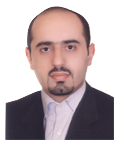3-D Synthetic Aperture High Volume Rate Tensor Velocity Imaging Using 1024 Element Matrix Probe
Fatemeh Makouei, Babak Mohammadzadeh Asl, Lasse Thurmann, Borislav Gueorguiev Tomov, Matthias Bo Stuart
Conference Papers2020 IEEE International Ultrasonics Symposium (IUS) , 2020 September 7, {Pages 04-Jan }
